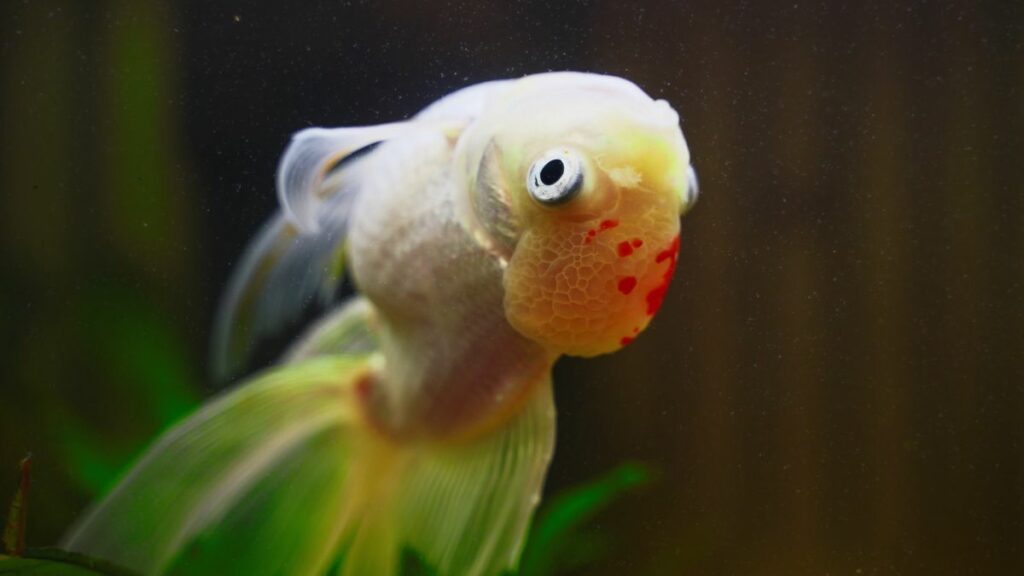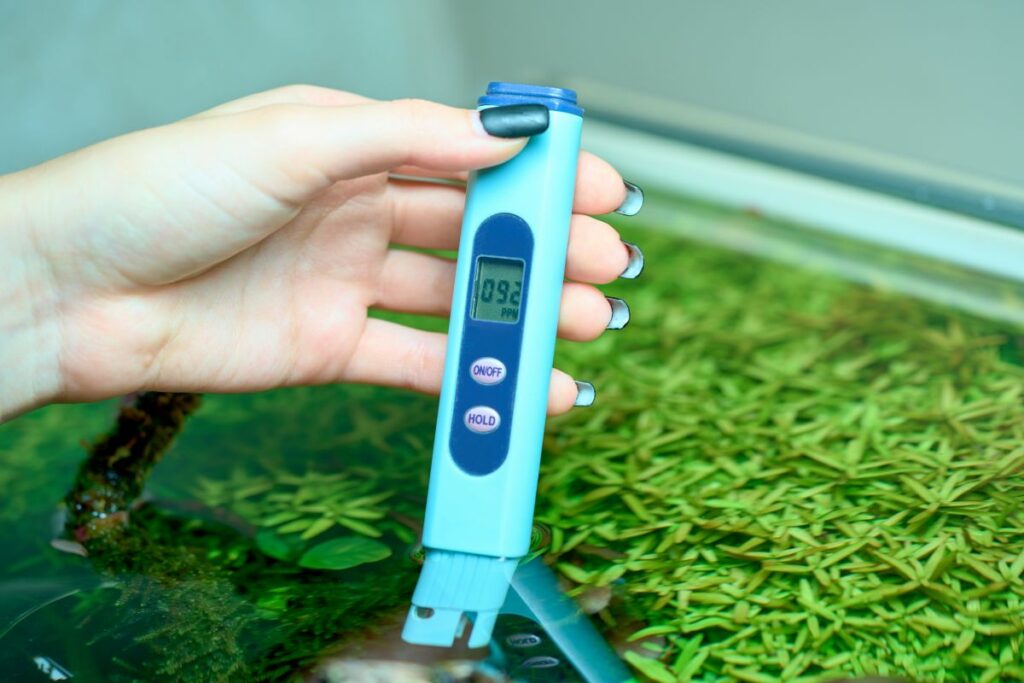Adding clean water is essential to good aquarium maintenance. But the sudden change may be fatal to sensitive species. How do we make sure not to kill fish when doing a water change?

Why Did My Fish Die After Water Change?
There are several reasons why your fight might have died after changing the water. All of them have to do with water parameter shifts. When concentrations of ammonia and other pollutants increase, a water change is important. But the sudden addition of new water may cause other parameters to swing.
Fish are creatures of habit and their biochemistry needs time to adapt to most changes. That is most true for saltwater fish and corals and the main reason why marine tanks are harder to keep than freshwater tanks. The ocean is an environment that takes centuries or millennia to change. Even minor shifts could be fatal to your marine pets.
Did You Dechlorinate Your Tap Water?
Municipal water treatment facilities use chlorine in developed countries. Chlorine kills disease causing bacteria and keeps water safe to drink even as it sits in pipes, waiting to be used.
Chlorination is a major success story in the development of public utilities but it’s a disaster for our aquarium. The element is toxic to all aquatic life, including fish and invertebrates. Chlorine poisoning will show up as inflamed gills, shimmying swimming motions, gasping, and eventual death. All tap water needs to be treated before it’s added to your aquarium.
Dechlorinating agents are inexpensive and easy to find in any local pet store. Some aquarists might prefer to let tap water sit for a while instead. Chlorine is a gas so it leaves the water if left out for a day or two.
Tap water degassed of chlorine is safe for aquarium use – but many cities also use chloramine (NH2Cl) instead. Chloramine is formulated to not outgas over time and it is also toxic to fish. So if you are allowing your tap water to sit before using it in a tank, it remains toxic to fish. You’ll need an aquarium tap water conditioner since they break down chloramine as well as free chlorine.
What is the Water Chemistry of the New Water?
Clean water refreshes fish and makes them healthier and more active. But sometimes it will cause them shock and even kill fish. A major reason is due to differences in water chemistry between your aquarium and the source of fresh water.
Tap water in most areas is hard (dGH greater than 8) and alkaline (pH 7.0+). Will hard water kill fish? A high pH isn’t bad for all fish; many species like livebearers and African cichlids prefer it. But if your tank is at one value and you do a large water change, the sudden shift may be fatal. Even if the pH remains within the preferred range of a fish species.
We need to remember that pH is a logarithmic scale, not a linear one. A change from pH 5.0 to 6.0 is a tenfold increase in alkalinity. 4.0 to 6.0 is a hundredfold increase. So adding a large amount of alkaline water to an acidic tank will have fish dying in tank.
What is the Water Temperature?
Water temperature is as important as water chemistry. Your aquarium fish won’t mind an influx of fresh water that’s a few degrees off. But a burst of freezing or scalding water will kill fish.
I aim to get my water temperature within 5 degrees of the main aquarium using a thermometer. Run your tap water as long as it takes before filling your bucket and dechlorinating it. The less shock you place on your fish, the less likely it is that fish die after water changes.
How Large Was Your Water Change?

I recommend small to moderate water changes in most cases. I don’t change more than 20-30% of the water at a time and do so on a biweekly schedule. Large water changes should be done to correct big problems, like an ammonia spike. Aquarists often find that their fish die after water change when they are doing 50% or more each time. Cleanliness is important but so is stability.
Are My Beneficial Bacteria Dead?
In most cases, you won’t kill your nitrifying bacteria after a water change. Not unless you replace most of the tank water with tap water that still has chlorine, which will kill them. You should also not use tap water to clean your filter, for this reason.
Most of the beneficial bacteria live in your filter, substrate, and other areas of high surface area. They do live floating in your aquarium water, but in much lower numbers. So they aren’t the reason your fish died after a water change.
The death of your bacteria is called new tank syndrome. Once they are gone or depleted, your aquarium’s nitrogen cycle is reset. Ammonia is no longer transformed into nitrite and nitrate. While it is dangerous to fish, ammonia takes time to accumulate. It will take a few days or a week for fish to start showing symptoms of ammonia poisoning.
How to Save Dying Fish After Water Change
Your fish are in severe stress once they start shimmying, floating, and gasping for oxygen. But you still have a chance at saving dying fish.
The first step is to identify which step you left out from the above list. Did you not match the pH? Is the new water temperature too cold? Did you forget to dechlorinate your tap water? Correct that parameter using a heater, dechlorinator, or pH reducer/increaser.
Instead of a standard aquarium dechlorinator, I recommend API Stress Coat. It contains agents that stimulate slime coat production in fish. The slime coat acts as a barrier to irritants and pollutants, helping fish weather sudden parameter shifts. It also removes chlorine, heavy metals, and chloramine in your water.
Make sure your filter is running and add aquarium aeration. An airstone and air pump will increase oxygen levels. Aeration not only helps fish breathe but causes any chlorine and other toxic elements to outgas faster.
Fish Staying at Bottom of Tank After Water Change
A fish that’s staying at the bottom of the tank after a water change could be suffering from temperature shock. Cold will make fish inactive since they are ectothermic (cold-blooded) animals.
If the water temperature has not dropped more than 6 degrees, allow the heater to warm the tank. Your fish will survive with no problems. If the water temperature dropped more than 6 degrees then add warm, dechlorinated tap water to bring it closer to the desired range. Don’t add a burst of very hot water as this may stress your fish further, or even kill them.
Conclusion
Water changes are beneficial but you could kill fish if you do them wrong. Stick to small, partial water changes done on a frequent basis. You will preserve the stability of your aquarium water chemistry that way.
FAQs
I would start by testing your aquarium water first using a freshwater master test kit. If the parameters are normal, I would not change the water yet. I’d look for other causes of stress, like disease symptoms, frayed fins, aggressive tank mates, etc.
Betta fish are resistant to nitrogenous waste products (ammonia, nitrite, and nitrate). How long they survive without a water change depends on your tank size, filtration, and pollution levels. If the tank remains topped off and filtered, 6 to 8 weeks is possible. But I don’t recommend this because elevated pollutant levels will still cause stress to your betta fish. Surviving is not thriving, and we want our pets to thrive.
If all of your fish died from aquarium ich then you don’t need to do a total tank cleaning. Ich medications are effective on the free-swimming stage of the parasite’s life cycle but not the white cysts that form on living fish. Treat your tank as normal using an ich medication. It will kill all of the remaining parasites and make the tank safe for newcoming arrivals.

